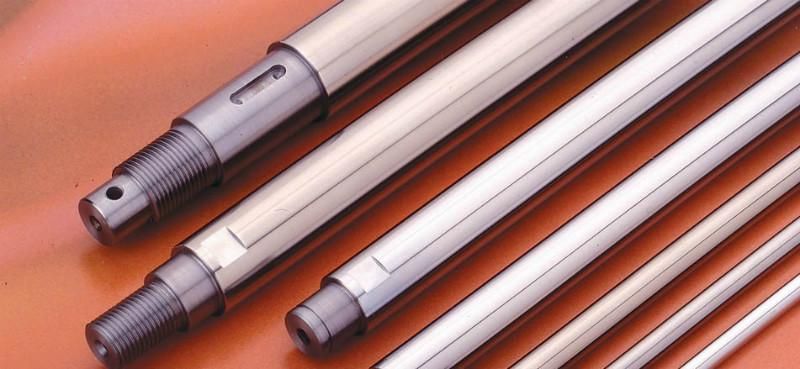What is the quenching and tempering heat treatment of 40Cr steel?
40Cr improves the hardenability of steel, enhances its strength and tempering stability, and has excellent mechanical properties. Workpieces with large cross-sectional dimensions or important adjustments should use Cr steel, but Cr steel has a second type of temper brittleness.
How do we experience the quenching and tempering heat treatment of 40Cr workpieces and various parameter process card regulations in actual work?
(1) After quenching and tempering heat treatment of 40Cr workpieces, oil cooling should be used. 40Cr steel has good quenching properties, can be hardened by cooling in oil, and the tendency of workpieces to deform and crack is small. However, small and medium-sized enterprises can ignite non complex shaped workpieces in water when refueling is tight, but no cracks are found. However, staff should strictly control the water and its temperature based on experience.
(2) After tempering, the hardness of the 40Cr workpiece is still relatively high, and the second tempering temperature should be increased by 20-50. Otherwise, it is difficult to reduce the hardness.
(3) After high-temperature tempering of 40Cr workpieces, the complex shapes are cooled in oil and simply in water to avoid the impact of the second type of tempering brittleness. The workpiece after rapid tempering and cooling should be treated with stress relief if necessary. There are three factors that affect the quality of the adjusted workpiece, and the level of the operator is an important factor. There are also various reasons such as equipment, materials, and pre adjustment processing. We believe that (1) the speed of the workpiece moving from the furnace to the cooling tank is slow, and the temperature of the workpiece entering the water has decreased below the critical point of Ar3, resulting in partial decomposition and incomplete microstructure of the workpiece, which does not meet the hardness requirements. Therefore, the coolant for small parts should pay attention to speed, while for large workpieces to cool, it is necessary to grasp time. (2) The amount of workpiece melting furnace should be reasonable, with 1-2 layers being appropriate. When the workpiece overlaps with each other, the heating is uneven and the hardness is uneven. (3) The arrangement of water ingress into the workpiece should be kept at a certain distance. Due to being too tight, the vapor film near the workpiece is broken and hindered, resulting in a lower surface hardness of the workpiece. (4) Opening the furnace for quenching cannot completely quench at once. It is necessary to turn off the furnace midway and reheat according to the degree of temperature decrease in the furnace. The hardness of the front and rear workpieces after quenching should be consistent. (5) Pay attention to the temperature of the cooling water. 10% of saline water above 60 cannot be used. Cooling water should be free of impurities such as oil and mud. Otherwise, insufficient or uneven hardness may occur. (6) Uneven adjustment hardness of unprocessed blanks. To achieve good adjustment quality, the raw material must be coarse tea, and the bat must be exercised. (7) After strict quality control, the hardness decreases by 1-3 units after quenching, and the tempering temperature can be adjusted to meet the hardness requirements. However, after the fire, the hardness of the workpiece was too low, and only HRC250000 to 350000 could be ignited again. It is not possible to only add medium or low temperature to meet the drawing requirements. Otherwise, the significance of the regulator will be lost, resulting in serious consequences.
Post time: Oct-08-2023


